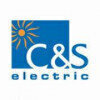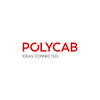Filter interviews by
Electrical Manufacturing Company Electrical Site Engineer Interview Questions and Answers
6 Interview questions
A resistor is an electrical component that resists the flow of electrical current, causing a drop in voltage.
Resistors are used to control the amount of current flowing in a circuit.
They are measured in ohms (Ω) and have color-coded bands to indicate their resistance value.
Resistors can be fixed or variable, with variable resistors allowing for adjustable resistance.
Examples of resistors include carbon film resist...
A relay is an electrically operated switch that uses an electromagnet to mechanically operate a switch.
Relays are used to control high power circuits with low power signals
They can be used for various applications such as controlling motors, lights, and heating elements
Types of relays include electromagnetic relays, solid-state relays, thermal relays, and reed relays
A circuit breaker is an electrical switch designed to protect an electrical circuit from damage caused by overload or short circuit.
Circuit breakers automatically detect faults in the electrical system and interrupt the flow of electricity to prevent damage.
They come in different types such as thermal-magnetic, magnetic, and hydraulic-magnetic circuit breakers.
Common examples include miniature circuit breakers (MC...
A diode is a semiconductor device that allows current to flow in one direction only. Types include PN junction diode, Zener diode, Schottky diode, and LED.
Diode is a semiconductor device with two terminals that allows current to flow in one direction only
Types of diodes include PN junction diode, Zener diode, Schottky diode, and LED
PN junction diode is the most common type, made of P-type and N-type semiconductor ...
A resistor is an electrical component that resists the flow of electric current. There are various types of resistors based on their construction and materials used.
Resistors are used to limit the flow of current in a circuit.
Types of resistors include carbon film, metal film, wirewound, and variable resistors.
Resistors are measured in ohms (Ω) and have color-coded bands to indicate their resistance value.
A diode is a semiconductor device that allows current to flow in one direction only.
Diodes are made of semiconductor materials such as silicon or germanium.
They have two terminals - an anode (positive) and a cathode (negative).
When a voltage is applied across the diode in the forward direction, it allows current to flow.
In the reverse direction, the diode blocks the current flow.
Diodes are commonly used in rectifi...
Electrical Manufacturing Company Electrical Site Engineer Interview Experiences
1 interview found
I appeared for an interview in Jun 2023.

(5 Questions)
- Q1. What is relay and how to work for relay and type of relay.
- Ans.
A relay is an electrically operated switch that uses an electromagnet to mechanically operate a switch.
Relays are used to control high power circuits with low power signals
They can be used for various applications such as controlling motors, lights, and heating elements
Types of relays include electromagnetic relays, solid-state relays, thermal relays, and reed relays
- Q2. What is circuit breaker. how to work for circuit breaker and types of circuit breaker.
- Ans.
A circuit breaker is an electrical switch designed to protect an electrical circuit from damage caused by overload or short circuit.
Circuit breakers automatically detect faults in the electrical system and interrupt the flow of electricity to prevent damage.
They come in different types such as thermal-magnetic, magnetic, and hydraulic-magnetic circuit breakers.
Common examples include miniature circuit breakers (MCB), m...
- Q3. What is resister and type of resister
- Ans.
A resistor is an electrical component that resists the flow of electric current. There are various types of resistors based on their construction and materials used.
Resistors are used to limit the flow of current in a circuit.
Types of resistors include carbon film, metal film, wirewound, and variable resistors.
Resistors are measured in ohms (Ω) and have color-coded bands to indicate their resistance value.
- Q4. What is resistor
- Q5. What is diode. hów to work dióde
- Ans.
A diode is a semiconductor device that allows current to flow in one direction only.
Diodes are made of semiconductor materials such as silicon or germanium.
They have two terminals - an anode (positive) and a cathode (negative).
When a voltage is applied across the diode in the forward direction, it allows current to flow.
In the reverse direction, the diode blocks the current flow.
Diodes are commonly used in rectifiers, ...
(1 Question)
- Q1. What is diode and type of diode.
- Ans.
A diode is a semiconductor device that allows current to flow in one direction only. Types include PN junction diode, Zener diode, Schottky diode, and LED.
Diode is a semiconductor device with two terminals that allows current to flow in one direction only
Types of diodes include PN junction diode, Zener diode, Schottky diode, and LED
PN junction diode is the most common type, made of P-type and N-type semiconductor mater...
Interview Preparation Tips
Top trending discussions






Interview questions from similar companies

I applied via Campus Placement
Interview Questionnaire
2 Questions
- Q1. Electric
- Q2. Electrical
Interview Preparation Tips

Interview Questionnaire
1 Question
- Q1. What is multimeter
- Ans.
A multimeter is an electronic device used to measure voltage, current, and resistance in electrical circuits.
It can measure AC and DC voltage
It can measure AC and DC current
It can measure resistance
It can also measure other electrical parameters such as capacitance and frequency
It typically has a digital display for easy reading
Examples of multimeter brands include Fluke, Klein Tools, and Extech

I applied via Walk-in and was interviewed in Sep 2021. There were 3 interview rounds.
Interview Questionnaire
1 Question
- Q1. Projects related
Interview Preparation Tips

I applied via Naukri.com and was interviewed in Jan 2021. There was 1 interview round.
Interview Questionnaire
4 Questions
- Q1. TRANSMISSION AND DISTRIBUTION OF ELECTRICITY (HT AND LT)
- Q2. POWER SYSTEM
- Q3. TRANSMISSION LINE
- Q4. LT LINE
Interview Preparation Tips

Electrical Engineer Interview Questions & Answers
Amber Enterprises Indiaposted on 1 Sep 2022
I applied via LinkedIn and was interviewed in Aug 2022. There were 2 interview rounds.

(2 Questions)
- Q1. Related electrical question
- Q2. Like wire connection
Interview Preparation Tips


(4 Questions)
- Q1. Simple question like your which subject best and why you are choice Trade
- Q2. Personal question about family and College life what is achievement
- Q3. Why your are join is this company
- Q4. Which products make
- Ans.
Electrical engineers work on a wide range of products including consumer electronics, power systems, communication devices, and more.
Consumer electronics such as smartphones, laptops, and TVs
Power systems including generators, transformers, and distribution systems
Communication devices like routers, modems, and cell phones
Interview Preparation Tips

Electrical Supervisor Interview Questions & Answers
KEI Industriesposted on 6 May 2022

(1 Question)
- Q1. Salary discussion and total experience
(1 Question)
- Q1. REC Standard LT and HT line overhead and underground
(1 Question)
- Q1. Final salary discussion
Interview Preparation Tips

Electrical Engineer Interview Questions & Answers
Hpl Electric & Powerposted on 26 May 2025
I appeared for an interview before May 2024, where I was asked the following questions.
- Q1. Can you describe a challenging situation you encountered at work and explain how you managed it?
- Ans.
Faced a critical equipment failure during a project deadline, I coordinated a rapid response to minimize downtime and ensure project success.
Identified the issue: A key transformer failed unexpectedly during a critical phase of the project.
Assembled a team: Quickly gathered a cross-functional team including technicians and project managers to assess the situation.
Developed a plan: Created a step-by-step action plan to ...
- Q2. What would you do if your manager provided you with unclear instructions?
- Ans.
I would seek clarification, ask questions, and ensure I understand the expectations before proceeding with the task.
Request a follow-up meeting to discuss the instructions in detail.
Ask specific questions to clarify any ambiguous points, e.g., 'Can you elaborate on the expected outcome?'
Summarize my understanding of the instructions and ask for confirmation to ensure alignment.
If possible, provide a draft plan based on...

I appeared for an interview in May 2025, where I was asked the following questions.
- Q1. Tell me about your self
- Q2. Why should I hire you
Electrical Manufacturing Company Interview FAQs
Some of the top questions asked at the Electrical Manufacturing Company Electrical Site Engineer interview -
Tell us how to improve this page.
Electrical Manufacturing Company Interviews By Designations
- Electrical Manufacturing Company Electrical Engineer Interview Questions
- Electrical Manufacturing Company Electrical Supervisor Interview Questions
- Electrical Manufacturing Company Electrical Site Engineer Interview Questions
- Electrical Manufacturing Company Electrical Maintenance Engineer Interview Questions
- Electrical Manufacturing Company Team Leader-Quality Assurance/Quality Control Interview Questions
- Electrical Manufacturing Company Engineer Interview Questions
- Electrical Manufacturing Company Junior its Engineer Interview Questions
- Electrical Manufacturing Company Electronics Engineer Interview Questions
- Show more
Interview Questions for Popular Designations
- Electrical Engineer Interview Questions
- Service Engineer Interview Questions
- Site Engineer Interview Questions
- Maintenance Engineer Interview Questions
- Electrical Technician Interview Questions
- Electrical Supervisor Interview Questions
- Executive Engineer Interview Questions
- Senior Electrical Engineer Interview Questions
- Show more
Overall Interview Experience Rating
based on 1 interview experience
Difficulty level
Duration
Interview Questions from Similar Companies

Electrical Manufacturing Company Electrical Site Engineer Reviews and Ratings
based on 2 reviews
Rating in categories
|
Electrical Engineer
45
salaries
| ₹2 L/yr - ₹4.5 L/yr |
|
Electrician
26
salaries
| ₹1 L/yr - ₹3.2 L/yr |
|
Electrical Maintenance Engineer
19
salaries
| ₹2 L/yr - ₹5.3 L/yr |
|
Production Engineer
10
salaries
| ₹1.6 L/yr - ₹4.8 L/yr |
|
Junior Engineer
9
salaries
| ₹2.2 L/yr - ₹4.5 L/yr |

Havells

BHEL

Polycab Wires

CG Power and Industrial Solutions
- Home >
- Interviews >
- Electrical Manufacturing Company Interview Questions











